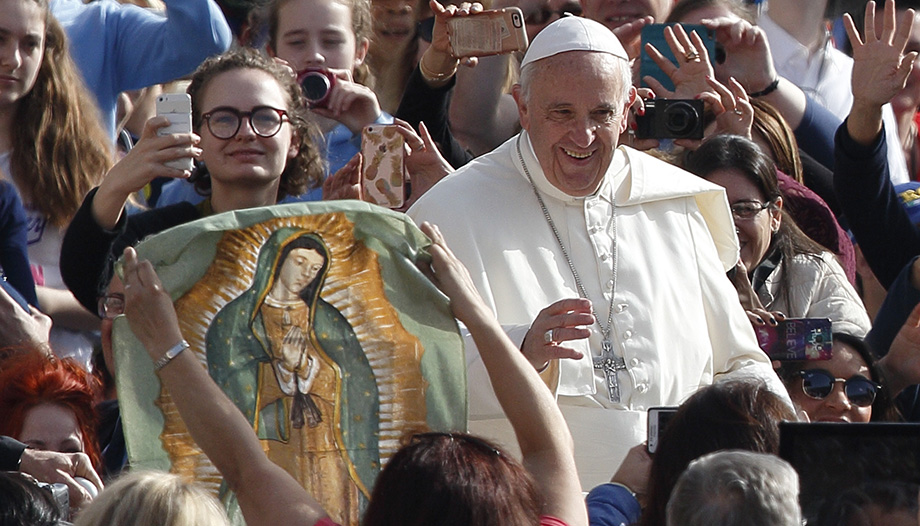The affection and spontaneity of the Mexican people have made of the Pope's visit and it is understandable that Francis described it on his return as an unforgettable experience. "transfiguration experience". Those who have followed the trip closely will not be able to easily say which act has been more significant or moving. Six "peripheries", six places and six themes were chosen as the goal of the stages, as our envoy Gonzalo Meza explains in his article: in Mexico City, dialogue with the authorities; in Ecatepec, poverty and marginalization; in San Cristobal de las Casas and Tuxtla Gutierrez, indigenous peoples and families; in Morelia, drug trafficking and young people; and in Ciudad Juarez, violence, migration, drug trafficking, young people and women. But the Pope has pointed out that his main purpose was to "to remain in silence before the image of the Mother". in Guadalupe.
He was indeed able to pray alone in front of the figure printed on the tilma of St. Juan Diego, perhaps for less time than he would have wished. In this issue, both journalist Andrea Tornielli and renowned Mexican philosopher Guillermo Hurtado agree in indicating that moment as the key to the trip, and not only as a fulfillment of the Pope's wish, but also from their own perspective of analysis. The latter believes that the Pope has brought strength to a disillusioned society in need of hope, both in Mexico and elsewhere. On the papal trip, the reader will also find the chronicle of our correspondents.
On the way to Mexico, a dream came true in Cuba: the fraternal embrace between Francis, Pope and Bishop of Rome, and Cyril, Patriarch of Moscow and of all Russia, with a long private conversation and the signing of a document. The meeting, as much desired by Francis as by his predecessors John Paul II and Benedict XVI, opens a new perspective in the relations between Catholics and Orthodox, broken a thousand years ago. Obviously it is not a definitive step in the recomposition of unity, but it is, quite simply, a historic event, a very special gift. The joint declaration, whose affirmations are carefully balanced and independent of detailed evaluations, "is full of riches for ecumenical dialogue".Romà Casanova, member of the Episcopal Commission for Interconfessional Relations in the Spanish Episcopal Conference, in the collaboration published in these pages.
Meanwhile, the grace of the Jubilee Year of Mercy continues to bear fruit everywhere, with a multitude of initiatives and proposals. The figure of St. Joseph is also on the horizon, since the Church's annual petition for priestly vocations and for families is concentrated on his Solemnity. If the forecasts regarding the date of publication of the apostolic exhortation expected after the Synod on the Family are fulfilled, this year the Church will be entrusting him as intercessor and supporter of her service to families.








